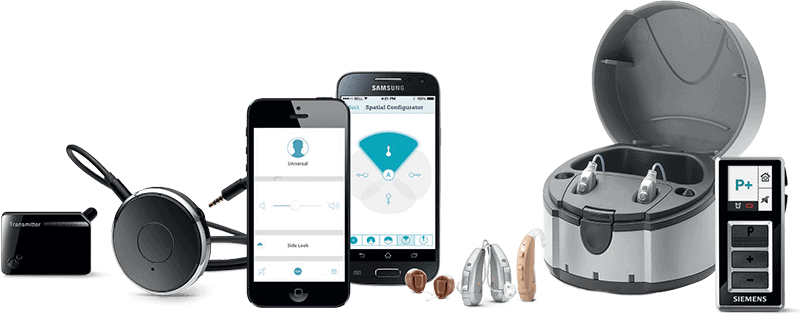








Which hearing aid is right for you?
All hearing aids contain the same parts to carry sound from the environment into your ear. However, hearing aids do come in a number of styles, which differ in size and the way they're placed in your ear. Some are small enough to fit inside your ear canal, making them almost invisible. Others fit partially in your ear canal. Generally, the smaller a hearing aid is, the less powerful it is, the shorter its battery life and the more it'll cost.
Hearing aid styles
Completely in the Canal (CIC)
Completely-in-the-canal hearing aids are molded to fit inside your ear canal and can improve mild to moderate hearing loss in adults.
- Is the least noticeable in the ear
- Is less likely to pick up wind noise because the ear protects the instrument
- Is easy to use with the telephone in most cases
- Uses smaller batteries, which typically don't last as long as larger batteries
- Doesn't contain extra features, such as volume control or directional microphones
In the Canal (ITC)
An in-the-canal hearing aid is custom molded and fits partly in the ear canal, but not as deeply as the completely-in-the-canal aid. This hearing aid can improve mild to moderate hearing loss in adults.
- Is less visible in the ear
- Is easy to use with the telephone
- Includes features that won't fit on completely-in-the-canal aids, but the small size can make the features difficult to adjust
- May not fit well in smaller ears
Half-shell (HS)
A smaller version of the in-the-canal hearing aid, the half-shell is custom molded and fills the lower portion of the bowl-shaped area of your outer ear. This style is appropriate for mild to moderately severe hearing loss.
- Is bigger than an in-the-canal hearing aid
- Is a little easier to handle than are the smaller hearing aids
- Includes additional features, such as directional microphones and volume control
- Fits most ears
In the Ear (Full-shell)
An in-the-ear (full-shell) hearing aid is custom made and fills most of the bowl-shaped area of your outer ear. This style is helpful for people with mild to severe hearing loss.
- Is more visible to others
- May pick up wind noise
- Contains helpful features, such as volume control, that are easier to adjust
- Is generally easier to insert into the ear
- Uses larger batteries, which typically last longer and are easier to handle
Behind the Ear (BTE)
Behind-the-ear hearing aids hook over the top of your ear and rest behind the ear. The hearing aid picks up sound, amplifies it and carries the amplified sound to an ear mold that fits inside your ear canal. This type of aid is appropriate for almost all types of hearing loss and for people of all ages.
- Is the largest, most visible type of hearing aid, though some new versions are smaller, streamlined and barely visible
- Is capable of more amplification than are other hearing aid styles
Open Fit (OTE)
These are usually very small behind-the-ear-style devices, although larger behind-the-ear devices can be modified for a more "open" fit. Sound travels from the instrument through a small tube or wire to a tiny dome or speaker in the ear canal. These aids leave the ear canal open, so they're best for mild to moderate high-frequency losses where low-frequency hearing is still normal or near normal.
- Is less visible
- Doesn't plug the ear like the small in-the-canal hearing aids do
- May use very small batteries
- Often lacks manual adjustments due to the small size
- Offers a discreet open-fit solution
- Appropriate for mild to moderate hearing loss
- Micro-thin tubing and small Nfusion technology.
